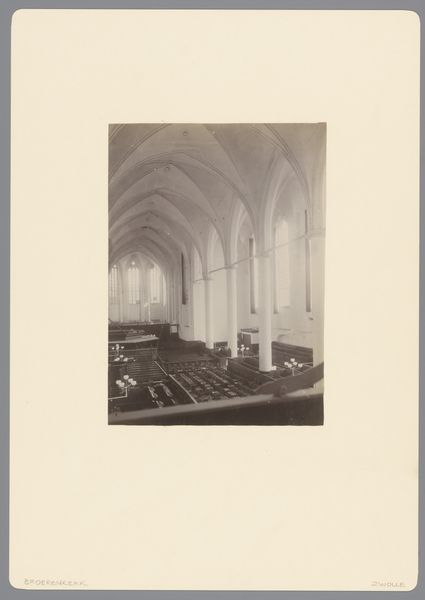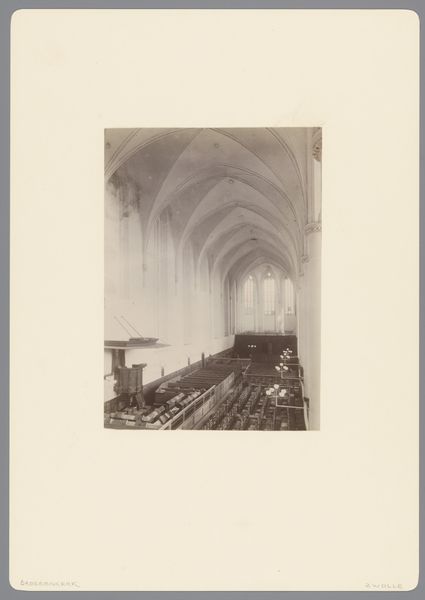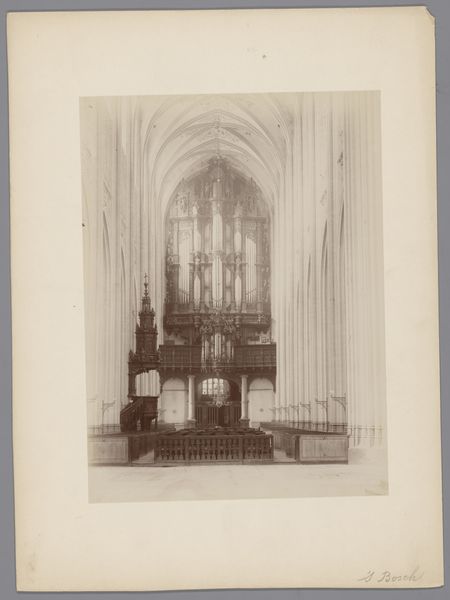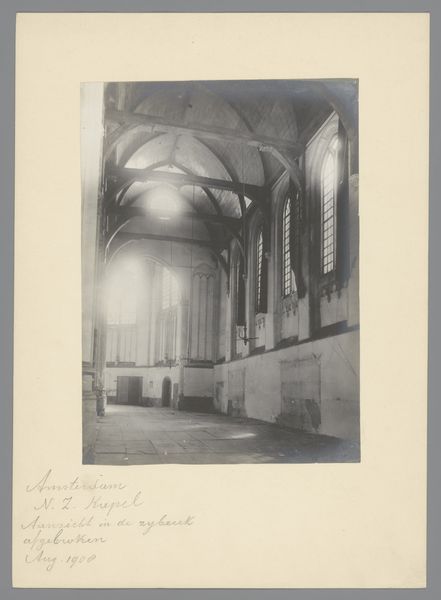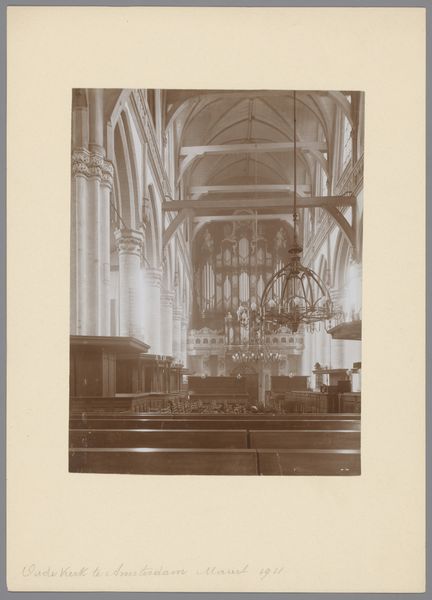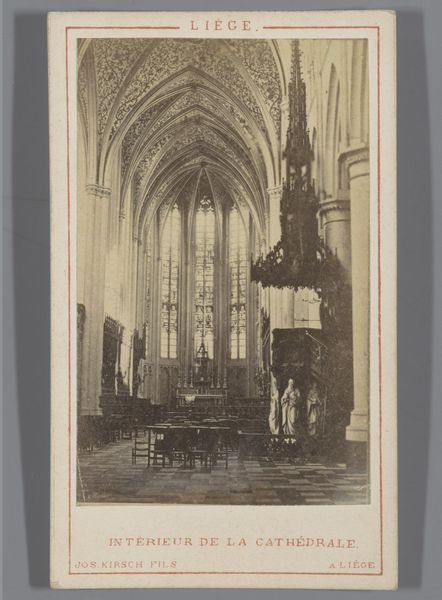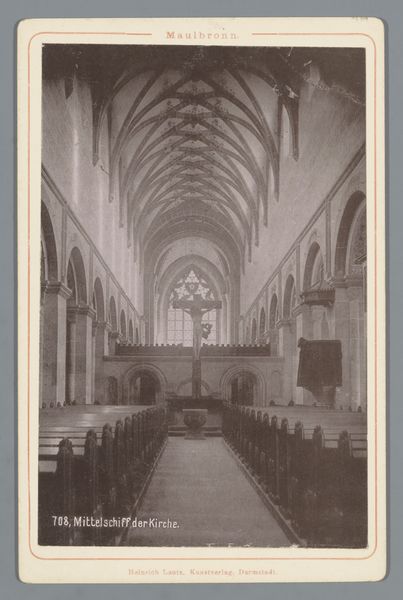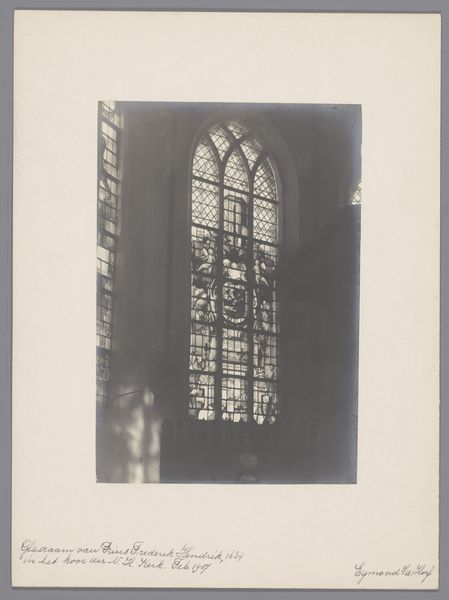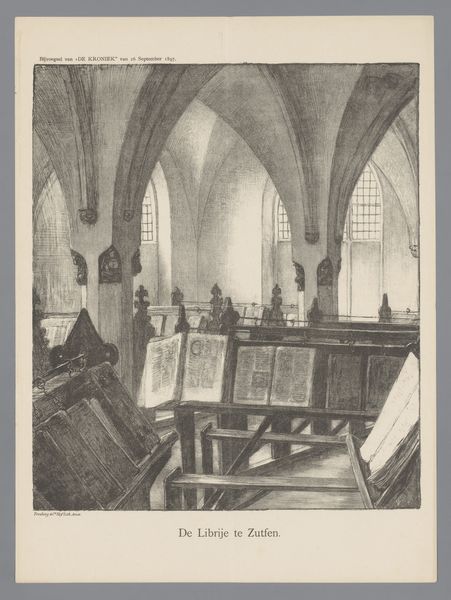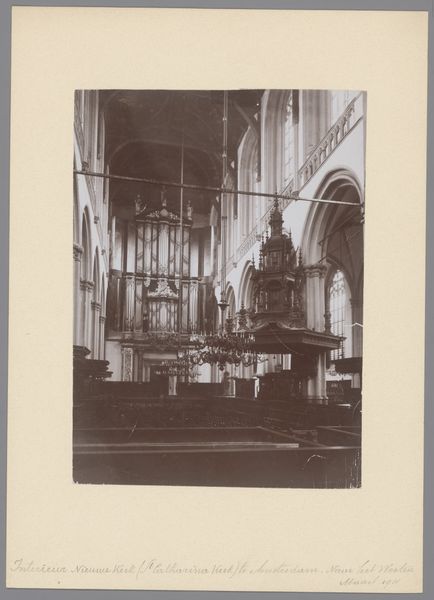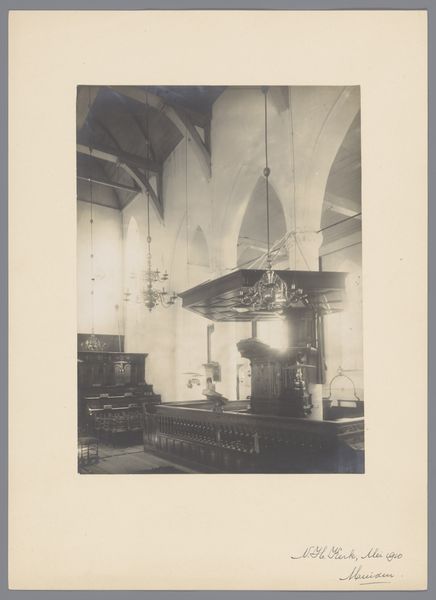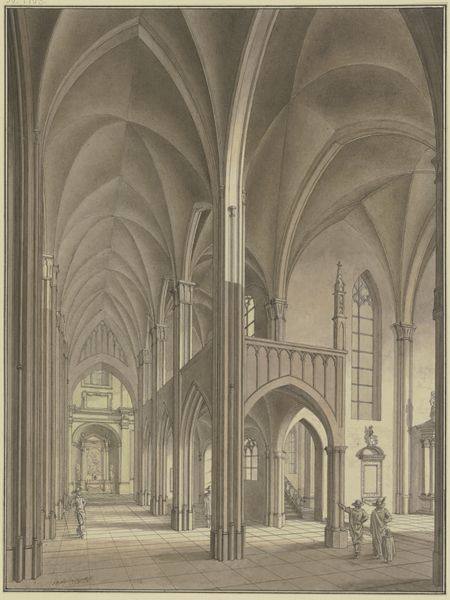
Dimensions: height 222 mm, width 160 mm
Copyright: Rijks Museum: Open Domain
Curator: Here we have a photograph titled "Interieur van de Sint-Bavokerk te Aardenburg", taken in 1909 by an anonymous photographer working for Monumentenzorg, the Dutch heritage organization. Editor: It has this kind of shimmering quality, almost spectral. It feels more like the echo of a space than the space itself, you know? There’s a real feeling of awe— or maybe just vast emptiness. Curator: It is a fairly conventional architectural study, but I agree. There is a certain drama implied. These early photographs of church interiors were not merely records of historical spaces, but also served to demonstrate civic pride and celebrate the architectural achievements of a community. It helped establish a visual record of the buildings at the time, which was a time of immense change. Editor: You know, seeing those pews makes me think of all the generations who sat there, contemplating... or fidgeting! I bet there were a lot of bored kids trying to draw in the hymnals during sermons! Did photography have an impact on these kids' perception of religious doctrine at the time? Did these kids think they were seeing "the church"? Curator: Absolutely! The widespread dissemination of photographic imagery was reshaping how people conceived of history, religion, progress. Church officials likely were cognizant of its role, since the proliferation of affordable photography provided even wider access to it, and subsequently less control for authorities over the representation of churches. Editor: Looking at the vaulted ceilings makes me want to just lie on those benches and stare upwards, feeling the weight of all those stones above, maybe having an existential crisis or two... It has this real emotional charge in a quiet and understated sort of way, don't you think? Curator: I agree. Its starkness reminds us how institutions project permanence. The choice of architecture often mirrored the intentions of that permanence, of reinforcing cultural expectations of society, of reinforcing that status quo in times of disruption. Editor: Well, it certainly gave me pause. It reminded me to notice, really *see*, the places around us and the histories embedded in the stones. Curator: Precisely. Photographs such as this serve as potent reminders that history is not merely a collection of dates, but a palpable presence woven into the fabric of our surroundings.
Comments
No comments
Be the first to comment and join the conversation on the ultimate creative platform.
